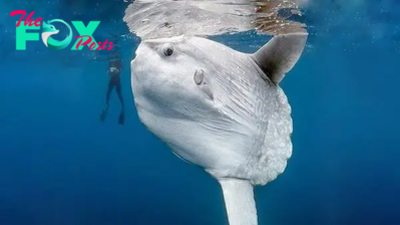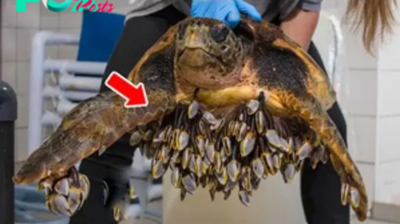Weird Animals
B83.The Eagle’s 7 Immutable Principles of Life: Lessons from Nature’s Majestic Hunter
The eagle is the bird that dominates the sky, and is also the bird that is honored to be chosen as the symbol of America, so why is this bird so special? Let’s explore the 7 life principles of the eagle. …

Principle 1:
The Eagle flies alone at a very high altitude, it does not fly with sparrows, or mingle with other smaller birds such as geese and mallards.
Stay away from sparrows and crows or other people who always hinder and hold back your work. Eagles fly only with other Eagles.
Principle 2:
Eagles have very long-distance vision, capable of focusing on something up to a distance of 5 kilometers. When it spots its prey, even a rodent from afar, it focuses its attention on the prey and sets out to capture it.
No matter what can stop it, the Eagle will not change its target until it catches it.
If you have a vision and are highly focused on your work, there will be no problems and you will succeed.
Principle 3:
Eagles do not eat dead things. It only eats fresh prey. Vultures often eat dead Animals, but Eagles do not. Be careful with what you see and hear, especially in situations in movies and on television.
We must always remember that what exists within us will grow old and become obsolete, therefore. Always renew yourself by constantly learning and changing.

Principle 4:
Eagles love storms. The only bird that loves storms. When the gray clouds come, that’s when the Eagles are very happy. The Eagle uses the wind of the storm to lift it higher. Once it sees the wind of the storm, the Eagle uses the power of the raging storm to lift it above the clouds. This gives the Eagle a chance to glide higher from its wings. Meanwhile, all other birds often hide in leaves, branches, and tree hollows.
We can use life’s storms to lift us to new heights. Enjoy the rewards of our challenges and turn life’s storms into our profits.
Principle 5:
An Eagle always has a test before it puts its trust in another!
For example: When a female Eagle meets a male and both want to mate, the female flies to the ground while the male is pursuing her. And she picked up a dry branch and flew back into the air with the male pursuing her. When it has reached the desired height, it will release the branch, at which point the branch falls freely. The male then chases this branch. The Male drops faster than the free-falling branch he is chasing. The male will catch the branch before letting it fall to the ground. It will bring that branch back to the female Eagle. The female Eagle continues to steal this branch and fly to a higher level and then drops the branch again to let the male chase. This goes on for hours, with increasing height until the female Eagle is assured that the male Eagle has mastered the art of retrieving the branch. Only then does the female allow the male to mate with her.
Whether in private life or in Business, one tests everyone’s commitment to the partnership before we work together successfully.
Principle 6:
When ready to lay eggs, the male and female Eagles locate a very high spot on a cliff where no predators can attack. The male will fly down to the ground and select sturdy dry branches and place them in the crevices of the cliff, then fly back to the ground again to collect smaller branches and arrange them in the nest to be made. .
It flies back to the ground and picks dry thorny branches and places them under the leaves. Then it collects soft grasses to spread on the thorny branches. When the first layer of nest construction is completed, the male Eagle flies back to the ground and chooses a tree with more thorns, brings it into the nest, he flies down to the ground to get grass to cover the branches with thorns, then then sheds its feathers to complete the nest.
The spines on the outside of the nest protect it from intruders. Both male and female Eagles participate in protecting their young. Females are responsible for laying eggs and protecting them, males build nests and search for food. While teaching the baby eagles how to fly, the mother eagle throws the baby eagles out of the nest. Because the cub is scared, it will jump back into the nest.

Next, the mother Eagle throws them back and then she continues to shed all the soft layers lining the nest, leaving behind the bare spines. When the baby eagles get scared and jump back into the nest again, they are stung by the thorns. It screamed and bled. It had to jump out of the nest and in this moment it wondered why the mother and father who loved it so much were now torturing it.
Next, Eagle and her mother pushed them off the cliff into the air. As they screamed in fear, the father Eagle flew out and caught them back before he fell and brought them back into the cliff. This will continue until the baby eagles can begin to flap their wings and fly. It needs to absorb this knowledge before it can fly.
Preparation teaches us what needs to be changed, our family’s teaching along with our own active learning will lead to success, being pricked with sharp thorns tells us that sometimes too comfortable, when we need results or not. We do not experience life, do not develop and do not learn anything from life. The thorns of life come to teach us that we need to grow, get out of the nest and live. We may not know it, but the paradise that seems comfortable and safe can still have thorns.

Those who love us do not let us become weak or lazy and push us on difficult paths so that we can grow and prosper. Even if their actions seem to make things difficult or difficult for us, they are actually their good intentions for us.
Principle 7:
Eagles prepare for old age… When Eagles become old, their feathers become weak and cannot keep them as agile as before. When it feels weak and about to die, it goes to a far place in the rocks. There, it plucks all the hair on its body until it is completely bald. It stays in its hiding place until its body has grown new feathers, then it can exit the burrow and return to life.
-

 Weird Animals4m ago
Weird Animals4m ago.Deep Sea Wonder: 22ft Circular White Fish Charms Diver, Becomes Social Media Sensation..D
-

 Weird Animals4m ago
Weird Animals4m agonht.The astonishing discovery of an alien mummy, perfectly preserved as if alive, shocked everyone.
-

 Weird Animals4m ago
Weird Animals4m agonht.Discover the chilling tale of the 1818 UFO crash and the lost portal to another planet.
-

 Weird Animals4m ago
Weird Animals4m agonht.Uncovering Lunar Mysteries: Ex-NASA Insiders Claim Extraterrestrial Presence in Lunar Structures
-

 Weird Animals4m ago
Weird Animals4m agonht.Today’s breaking news: a mysterious floating city-like UFO discovered in Dulali village has caused widespread panic.
-

 Weird Animals4m ago
Weird Animals4m ago.The Astonishing and Terrifying Experience of Coming Face to Face with a 4-Meter Octopus!..D
-

 Weird Animals4m ago
Weird Animals4m agonht.Breaking News: Documentaries Uncover UFO Crashes in the Desert
-

 Weird Animals4m ago
Weird Animals4m agonht.Breaking news: Utah woman claims to have raised abducted aliens since 1923, shocking everyone.
























